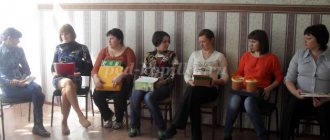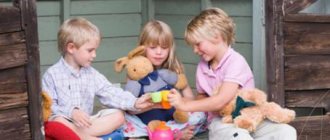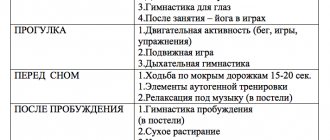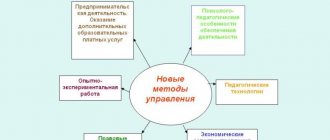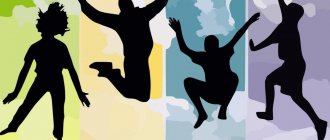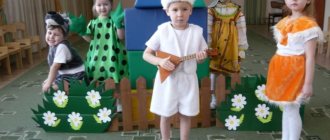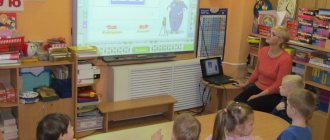Author: Koryakina Irina Vladimirovna
The use of art therapy methods in the educational process of preschool educational institutions.
Koryakina Irina Vladimirovna
teacher MKDOU kindergarten No. 13
city of Rossoshi.
It is no secret that preschool childhood is one of the most important stages in a child’s life. During this period, the child actively explores the world around him. And in kindergarten, he gets his first experience of interacting with other people, tries to find his place among them, learns to live in harmony with himself and others, and receives his first basic knowledge. The task of preschool education specialists is to ensure that the child receives experience, skills, and knowledge in psychological conditions that are comfortable for him and to the extent that he needs. The increase in the number of children with speech pathologies dictates the need to review the existing methods and technologies of correctional and developmental work in preschool educational institutions.
Work on these problems contributed to the search for new technologies in working with children. The most acceptable, in my opinion, is art therapy. Art therapy
literally translated from English - “healing with art.” This is a unique method of natural, “unobtrusive” personality disclosure, which is successfully used by psychotherapists, psychologists, and teachers.
Analysis of results.
Before introducing art therapy for preschoolers everywhere, scientists conducted many studies, the results of which were positive. Thus, groups of children with speech disorders were recruited. It is known that delayed speech development also negatively affects the overall development of the child, because by studying the world, communicating with his peers, with people who are older, by answering them, the baby learns about the world. Looks at how to act in a given situation, plans his responses, etc.
Along with speech delay, the child’s emotional background also suffers, and most often the problem with speech lies not only in speech therapy. The problems lie much deeper. And the only way to somehow change this is to find an individual approach to the child, preferably at the moment of his passion for something, to find common interests with him so that he can open up, show his emotions, and, as a result, begin to speak and understand the world around him.
The use of art therapy in the practice of a teacher-psychologist in a preschool educational institution is justified by its inherent functions: educational, developmental, correctional, psychotherapeutic, diagnostic. Art therapy has ample opportunities in developmental and correctional work with preschool children. Allows you to develop the child’s communication skills and ability to cooperate with peers. Among other things, art therapy is a wonderful way for others to express their emotions and feelings in a painless way.
Creativity is closely connected with a child's life, filled with rich play, fantasy and symbolic activity. Children do not yet know how to clearly express their thoughts, but they can draw, sculpt, and fantasize. Namely, art therapy methods allow a child to express his state through drawing, dance, fairy tales, and games. Feelings and emotions are often expressed through the symbols children use. There is a confusion of internal and external reality. In their creativity, children, without thinking, draw, depict, reproduce what they feel. It is “art therapy” that allows you to achieve a positive developmental effect in working with children. In my opinion, conducting integrated correctional and developmental classes that combine music therapy, phototherapy, body-oriented art therapy techniques, etc. are most effective, since the child has the opportunity to realize his creative abilities and imagination, the children’s vocabulary is enriched, and most importantly — communication skills develop.
In art therapy sessions with preschoolers, art is not an end in itself, it is only a means that helps to better understand oneself.
Purpose of the lesson
: not to teach a child to draw or sculpt, but to help, through art, to cope with problems that cause him negative emotions, which he often cannot verbalize, and to give an outlet to creative energy. Art - therapeutic activities contribute to a clearer, more subtle expression of one’s experiences, problems, internal contradictions, on the one hand, as well as creative self-expression, on the other. In the process of creativity, a child can express himself much brighter and more clearly than in writing or speech. The following types of art therapy are distinguished:
· Isotherapy, during which children draw with paints and pencils.
· Color therapy, during which, thanks to the exposure and study of colors, the child better understands the world around him.
· Sand therapy, which allows you to develop not only your imagination, but also improves motor skills due to the unusualness of sand.
· Game therapy, during which special games are played, each of which is aimed at learning a specific emotion, action, etc.
· Music therapy, which many children like because they even allow them to scream.
· Fairytale therapy, during which moral qualities are instilled in the child through the characters of books, by their example, by their actions.
Interaction with children during art therapy is based on mutual understanding, respect, and choice of preferences, so most children like it and attend classes with pleasure.
Each type of art therapy has its own narrow techniques, which are mastered by specialists. In general, we can say that the methods of all types of art therapy are based on “switching” the activity of the cerebral hemispheres. The left hemisphere is a kind of censor, reason, consciousness, which sometimes does not allow sincere feelings to come out, suppressing them. The right hemisphere, which is activated during creative activity, triggers unconscious processes that open the way to the expression of genuine experiences. As a result of art therapy sessions, “the hemispheres begin to work together “harmoniously”, and this work is aimed at recognizing and correcting internal, unconscious problems: fears, complexes of clamps.”
Art therapy does not require artistic skills or visual arts ability, so every child can participate in this work. Drawings and crafts reflect the thoughts and mood of children and make it possible to diagnose psychological developmental disorders (neuroses, stress). During classes, the child freely expresses his imagination. Using available materials (clay, gouache, thread, pasta, stones and sand) develops fine motor skills. Music, singing and dancing lessons help him, within just a few lessons, to relieve tension, get rid of negative emotions, and overcome his deepest fears (fear of water, dogs, the dark and insects).
During the educational process, a preschooler learns to communicate with peers, gains confidence in himself, and gains new knowledge about the world around him.
Classes are conducted by professional teachers in an entertaining way, which makes it possible to interest passive children and make them active participants in the process, and not just listeners. With the help of games and special exercises, hidden skills are identified and developed, causing children to have positive emotions and a feeling of satisfaction from the results of their creativity.
Main tasks
problems that art therapy effectively solves for preschoolers are:
· Development of cognitive and speech activity, behavior correction.
· Harmonization of the emotional state of children.
· Broadening one's horizons through familiarization with cultural heritage (literature, theater, music, painting, sculpture, photography).
· Unlocking creative potential.
· Development of originality of thinking.
· Improved attention and memory.
· Formation of an active life position.
· Increased self-esteem.
· Development of communication skills.
Art therapy techniques and exercises for children of different ages
You can engage in various types of artistic creativity from early childhood, of course, by choosing appropriate techniques and conducting exercises in a playful way.
Classes for children 2-4 years old
At this age there are several key points to consider when organizing activities. First of all, this concerns the development of different abilities of the baby:
- emotional sphere;
- fine motor skills of the hand;
- speech activity.
The inclusion of these areas in creative activity has a beneficial effect on their condition and development. Children's emotions are closely related to perception, including visual and tactile. Therefore, we can advise you to pay more attention to working with paints, pencils, plasticine, and colored paper.
For classes, it is better to select materials of bright colors, preferably warm ones. The famous researcher of the psychology of color perception B. A. Bazyma called the shades of yellow, orange and red “color vitamins” necessary for the normal development of children. As additional colors, you can use soft green, light green, blue, and turquoise colors.
Exercise "Palms"
For this exercise you will need a piece of paper, finger paints and colored pencils. Ask your child to make a handprint on paper. If there are no finger paints, then you can simply outline the child’s hand, and then offer to paint it in a bright color.
Admire the print with your baby. What does it look like, you ask? What would a child like to turn his palm into? You can, for example, draw a flower on each finger, turning your palm into a bouquet, or draw a cockerel’s head on the thumb, then the rest will become wing feathers.
Try to let your child draw and tell stories on his own, only occasionally helping him, prompting him, but not suppressing his initiative. Together with him, write a story about the character you have created. You can draw other birds or fish to create a whole picture. If several children are engaged, then it will be good to do group work.
Classes for children 4-6 years old
These children are already older, they have better coordination of movements, and they are more independent. And most importantly, they actively use imaginative thinking and imagination; it’s not for nothing that this period is called the age of dreamers.
In art therapy classes with children 4-6 years old, you can already use a combination of several techniques, which will contribute to their creative development. During this period, art therapy is often used to work with children’s fears, anxieties, and internal problems, and classes help to overcome them.
It is very important to actively use speech activity with children of this age, encouraging them to speak out their fear and take it beyond the limits of consciousness, thereby getting rid of it. Drawing also performs the same function.
Exercise “Little Storyteller”
A fairy tale is an area in which a child can imagine his fear and get rid of it, finding a way out of a difficult situation. Of course, at first the child will need adult help.
One of the common children's fears is the fear of getting lost, getting lost, or being left alone. Therefore, in the fairy tales they invent, the hero (boy, kitten, puppy, etc.) often finds himself in this fictitious situation. When helping your child come up with a plot and adventures for the characters, guide your child’s thoughts towards solving the problem. After all, a fairy tale must have a good ending, the hero must find his home, parents, friends, and in the end everyone must be happy.
At first, writing fairy tales with children takes the form of guiding questions from the teacher and answers from the child. For example:
- Who will we have a fairy tale about? Maybe about a kitten? Or about a puppy? Or about a boy?
- What's his name?
- Where does he live?
- What happened to him?
- What happened next?
- Who helped him?
Please note that in a fairy tale there must be a conflict or adventure when the hero finds himself in a difficult situation, and the child needs to come up with a way out of this situation.
Difficulties may arise at first, because inventing fairy tales is not an easy task. But then the children get carried away and will definitely delight you with the wonders of their imagination. The main thing is to be patient and willing to help.
A drawn illustration for a fairy tale invented by yourself is a very positive moment. Visualization of characters helps to express children's imagination. Therefore, it will be better if the children not only come up with heroes and adventures, but also draw them. And with what delight they greet “real” books with their own stories and illustrations!
Classes for children 7-10 years old
Children of this age are characterized by the development of spatial thinking and a passion for various types of design activities. Girls enthusiastically draw and arrange houses for dolls in their notebooks, and boys create robots, cars and spaceships. When organizing art therapy classes, you need to take these hobbies into account.
Exercise “City of the Future”
Invite the children to draw (make from plasticine, glue from colored paper) a fantastic city of the future. Most children (as well as adults) have difficulty coming up with something on their own. Therefore, first it is worth discussing with the guys what they would like to see in this city of the future. The discussion will also play a psychotherapeutic role, forcing you to free yourself from timidity and indecision, pushing your imagination. By speaking, children better imagine the visual picture and understand what and how they would like to draw.
By drawing, children not only demonstrate their creative abilities, but also comprehend their dreams, expectations, and life ideals. After the drawing is completed, you need to discuss it, praising each participant in the class, noting something original, interesting, unusual in the drawing. Be sure to ask why certain details were depicted, why these colors were chosen, who lives in this city, etc.
Classes for children 11-15 years old
Adolescence is a difficult age, and children are not always willing to contact a psychologist, especially if you ask them to draw or sculpt something. And it’s not easy to get them to come up with fairy tales, although you can, of course, find the necessary incentives. Therefore, a psychologist should seriously think about how to interest teenagers and at the same time try not to embarrass those who do not feel capable of artistic creativity. One of these exercises, equally effective for both adults and children, is the “Doodle Game”.
Exercise "Doodle game"
This technique was invented by the English child psychiatrist D. Winnicott. It allows not only to identify the internal problems and conflicts of a person of any age, but also to help him overcome them. In addition, “The Doodle Game” can captivate even the most skeptical and stubborn teenagers.
To complete this exercise, you only need a blank sheet of paper and a pen. You need to invite the teenager to draw any doodles, zigzags, in short, any tangled ball of lines. It's better to do this with your eyes closed.
And then ask the children to open their eyes and carefully look at their scribbles. Ask: What images were they able to see? Ask them to trace the outlines of the shapes, perhaps adding or shading something. If necessary, help children examine unclear images and make them more complete.
These are just examples of exercises that can be done with children as part of art therapy. But this technique is not only diverse, effective, but also convenient. Everyone is able to come up with their own exercises and bring something of their own to the classes. Moreover, art therapy promotes the creative development of not only children, but also those who engage in it - teachers and parents. Try it and you won't regret it.
Benefits of art therapy for preschoolers.
Due to the fact that art therapy combines psychology, medicine, and pedagogy, it is possible to achieve many goals, and most importantly, highlight a lot of advantages.
· Firstly, the classroom environment is absolutely safe. There is no competition, each child does what he likes and tries to achieve his goals.
· Secondly, due to the fact that after each lesson a visible result is obtained (drawing, dance, song, craft, etc.), you can clearly monitor the development of the baby, see how comfortable he is, how much his worldview has changed.
· Thirdly, every child can realize his own worth. After each lesson, parents see a craft for which they praise. Also, sometimes teachers ask kids to make a part of something in common. And seeing that the piece he made made up one overall picture, he will not only be proud of himself, but will also understand that it means a lot.
· Fourthly, children who have speech problems can find other ways to express their emotions through art, thereby not withdrawing into themselves.
Much attention is paid to the results after classes, because they show how effective the therapy is for a particular child and whether anything needs to be changed in the approach.
Goals and objectives of children's art therapy
The main goal of art therapeutic practice is to create favorable conditions for the harmonious development of the child. The process of growing up and a child’s adaptation to the social world is always associated with psychological problems and difficulties. They are quite natural, but are often a source of negative emotions, fears and stress for a child. Art therapy is the most gentle method of preparing children for age-related crises and overcoming their consequences. In general, it promotes the development of children and helps teachers and parents solve a whole range of problems:
- overcoming phobias, complexes, self-doubt and isolation;
- development of the child’s emotional sphere;
- formation of a positive emotional background, creation of conditions for relaxation and relief from the effects of stress;
- development of fine motor skills of the hand and higher mental functions: thinking, imagination, speech;
- revealing the child’s creative potential and instilling interest in creative activities;
- developing communication skills in a group and the ability to kindly evaluate the work of others.
Special mention should be made of joint activities between parents and children. Nowadays, within the framework of art therapy, the practice of organizing such creative interaction is spreading. It is extremely useful and important for the development of children. When a child sees in his parents not just strict adults, but like-minded people passionate about a common cause, his relationship with them moves to a completely different level. This is not a relationship of subordination, but of partnership, mutual interest and respect. Such relationships with parents are the basis of friendship and trust that will last a lifetime, and no teenage crisis will interfere with this friendship. Believe me, I know this from my own experience.
Isotherapy.
One of the most common methods of art therapy is isotherapy. It has been studied much more than other methods, and it is easier to apply. All children love to draw, some take pencils for this, some use felt-tip pens, and some draw exclusively with paints. And there is nothing surprising in the preferences of children, because each of them sees the world in his own way and masters those methods that are closer and clearer to him. This also applies to drawings.
Isotherapy specialists are able, based on the baby’s drawing, to draw conclusions about his emotional state and psychological component. So, some parents notice that their child at a certain point begins to draw exclusively with dark colors. This suggests that his state, primarily moral and psychological, is tense, that something is bothering him. And it is very important to find out what exactly.
In the process of training and passing, the improvement in his condition will be noticeable in his own drawings. So, if a child began to use light or bright colors, gradually replacing dark with bright, then this indicates the correctness of the chosen direction.
Sand therapy.
More recently, sand therapy has begun to be used, which children really like. If you look at the playground in the summer, you will notice that almost all the children are happy to make Easter cakes, build castles, etc. Sand often acts like a magnet on children. Before they even realize what they are doing, their hands themselves are sifting sand, building tunnels, mountains, etc. (and if you add miniature figures and toys to this, then a whole world appears, scenes are played out, and the child is completely immersed in the game). Sand has the property of allowing water to pass through. Observations show that playing in the sand has a positive effect on the emotional well-being of children. The fundamental idea of sand therapy is formulated as follows: playing with sand provides the child with the opportunity to get rid of psychological trauma by transferring fantasies outward, onto the plane of the sandbox, and creating a sense of connection and control over their internal impulses. During sand play, a child has the opportunity to express his deepest emotional experiences, he is freed from fears and the experience does not develop into mental trauma. Sand therapy aims to help the young child develop a more positive self-concept, become more responsible in his or her actions, develop greater self-acceptance, become more self-reliant, gain a sense of control, develop self-esteem and gain faith in yourself.
Playing in the sand provides a means to resolve conflicts and communicate feelings. Toys equip the child with suitable tools, since they are, without a doubt, the environment in which the child can express himself. In free play he can express what he wants to do. When he plays freely, and not at the direction of someone else, he performs a whole series of independent actions.
The use of a sandbox is most suitable for working with preschool children. Often young children find it difficult to express their experiences due to insufficient development of the verbal apparatus, poor ideas or developmental delays; the proposed technique can be very useful. Nonverbal expression using various objects of sand, water, as well as constructive and plastic materials is most natural for them, which becomes especially significant if the child has certain speech disorders.
Each selected figurine represents a character who can interact with other heroes. The child himself comes up with what they talk about or what they do: sometimes he can invite them to join the game and speak on behalf of a character. In all cases, the child feels like the master of his small world and is the director of a mini-scene played out on a sheet of sand. What was previously hidden in the depths of the child’s soul comes to light: the characters in the game come into motion, expressing the most relevant feelings and thoughts for the child.
Playing with sand does not need to be directed. The adult plays only the role of a spectator. This is an active presence, not a management of the process. The positive energy of the child, which is released during play, has a positive impact on the development of personality and subsequent learning of preschoolers.
During special classes with sand, experienced specialists can pay attention to the child’s psychological state based on the actions and behavior of the child. There are cases where, with the help of sand activities, it was possible to correct the behavior of children with a mild form of autism and mental retardation. In addition, it was noted that this particular type of therapy can help in better rehabilitation in case of transfer to another kindergarten, loss of a loved one, pet, moving from one city to another, etc.
For such activities, the baby will need a small sandbox, a lot of toys and a container of water to wet the sand and sculpt figures from it. During classes, the art therapist (teacher) asks questions to the child, tries to guide his actions, thereby helping him adapt to the world around him, as well as control his emotions.
Theoretical foundations of socialization of children with disabilities
Most often, socialization for a child with disabilities is much more difficult than for ordinary children.
A specific difference between the new generation of Federal State Educational Standards is that the result of the education of a child with disabilities is considered in the ratio of personal, meta-subject and subject-related educational results. Personal results include mastering the competencies necessary to solve practice-oriented problems and ensuring the formation of social relationships in various environments, as well as the formation of motivation for learning and cognition.
Meta-subject results (learning actions) include mastered universal learning actions (cognitive, regulatory and communicative), which form the basis of the ability to learn, ensure the mastery of interdisciplinary knowledge, the acquisition of cognitive experience and the implementation of various types of activities.
Subject results are associated with mastery of the content of each subject area, are characterized by the acquired experience of activity specific to the subject area to obtain new knowledge, and also evaluate achievements in the acquisition of knowledge and skills and the possibility of their application in practical activities and life.
The result of mastering the basic educational program by children with disabilities is “the introduction of the child into culture.” In this case, the child’s socialization will depend on the so-called “life competencies” formed during the learning process.
Competencies are considered as potential, psychological new formations: knowledge, ideas, programs (algorithms) of action, systems of values and relationships, which are then revealed in competencies as personal characteristics. Mastering competencies means becoming a full-fledged member of society, being able to take responsibility for one’s own actions and showing interest in learning.
Competencies have a complex composition:
cognitive - knowledge that children acquire; activity - skills and abilities that a child can put into practice; reflective - transformation of new knowledge into skills
Delicious colors
These books hide secrets under every flap. Which? Play and guess together with your baby!
Buy
Fairytale therapy for preschoolers.
Almost all parents know how important it is to read fairy tales to children, because from them they can learn norms of behavior and compare them with something. Fairytale therapy includes not only reading books, but also discussing the meaning, characters and their actions. In addition, teachers invite children to invent fairy tales themselves, giving them one or two heroes. And since children love to compose, they like such sessions.
Depending on what the characters in the story do, where they end up, and how they behave, the teacher can draw a conclusion about the general condition of the child, and if any problems arise, help him with the help of fairy tales.
For example, naughty children are told fairy tales in which when they behave well, they are praised, hugged, etc. This is exactly what children react to, because they want to be the best and good, to feel more attention to themselves. True, not everyone knows how to achieve it using good methods. And using the example of fairy-tale heroes, this is easy to do.
Music and dancing.
All children love to dance, they like it when they turn on music and teach them some movements. All people are designed in such a way that when they are in a certain mood, they want to listen to certain music. It's the same with kids.
Music therapy, however, is very rare today, but every year, due to the increase in its popularity, more and more specialists appear. Music can help a child with the following:
· Take off . Sometimes a baby is stressed because he has a lot going on, and yes, surprisingly, children have their own “childhood problems” too. And to relieve this stress, tension, he needs help. A great way to distract yourself is by dancing to fun music.
· Adjust speech abnormalities. Many psychologists and speech therapists believe that songs help a child speak better, as brain cells are activated and the tongue is trained.
· Regulate his behavior, for example, when a child often shows aggression and is rude.
· Increase mobility, thereby improving overall physical condition.
During music therapy, the teacher presents to the child a whole unknown and unusual country, where kings and princesses rule. The child’s imagination creates interesting pictures, he wants to understand more.
And most importantly, dancing and music help the child take his mind off the real world.
